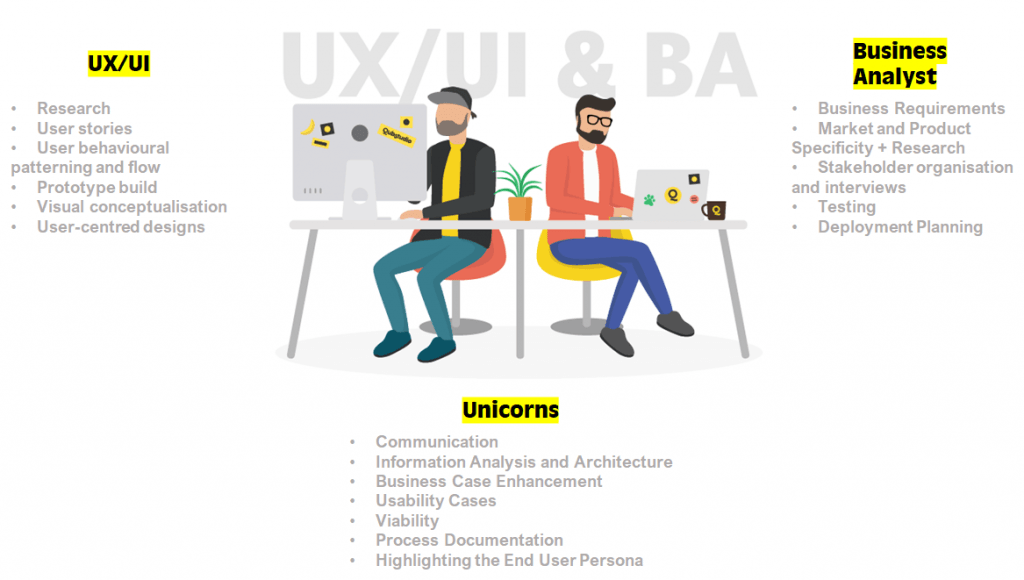
Welcome to 2020. Yes indeed, we’re at the very top of the new year, where going back to work as a consultant, with bright ideas and an invigorated sense of purpose, may seem challenging when we’re met with the ongoing challenges from pre-existing engagements prior to the holiday break. How can we negate these habitual thoughts of ‘business-as-usual’ and look upon our work moving forward with fresh eyes and perspective? Arguably there is no better time to do this than at the top of the year. With resolutions, personal goals and mantras ripe in the air, I look to one that’s simple enough and that is in line with where we left off at the end of 2018 with inception of Purple – cue ‘Come Together’
But unlike the 1969 seminal hit song from the Beatles, there are no political campaigns or convoluted meanings behind this simple concept, just practical examples which I feel we’re already enacting in our client engagements. Some might call it ‘wearing multiple hats’, or ‘multi-skilled’. However, I don’t see come together as the onus of a single individual, but rather the responsibility of all us hailing from many disciplines and bringing our professional experience to highlight where can pursue skill and role growth. One that has guided my career for the past year, is the relationship between the Business Analyst and the UX practitioner.
The perception of User Experience as an ambiguous label is not surprising, considering how new it is as an integrated skill offering to the technology services and solutions field. The assumption that UX is a niche area, encompassing primarily solution design and testing, limits the broader field of skills that are inherent to a UX-er, such as user research, site and interface coding, user training and education, and cultivating change adoption. The lack of incorporation of these skills when discussing what a UX can bring to the table, whether it be a project or broader consultation for pre-sales, is a fallacy to acknowledge the unique depth of disciplines that User Experience orbits. This perception bias can at times limit the extent to which the value of user experience expertise can be up-sold to a given piece of work or undervalued in their contribution to an organisation’s service offerings.
The expectations of a Business Analyst reside in a similar, limited view. Although having been around for longer and being considered a staple within service/solutions delivery in the industry, the desire for growth within this role has come naturally as a result of the same shift in technology, available services and the dynamic needs of businesses and users. Simply put, the more technology options that are presented as viable solutions, coupled with a heightened awareness of the customer or business in general creates demand for both flexibility and adaptability from the BA to meet a myriad of requirements that arise out of this constantly changing landscape. However, unlike a UX-er, a business analyst may undervalue within themselves, what they have to offer to a project team, feeling possibly boxed-in by the long-standing standardisation of business analysis practices.
A case could be made then, that perhaps the combination of UX and BA skills is a winning one, as there is enough congruence between these disciplines to work well with and learn from each other. If a greater depth of understanding and empathy from users can be derived based on this combined skill set, then so is the potential for a better delivered service.
Imagine you are in the middle of project delivery – all activities are on track, the output is meeting the customer’s requirements, things are generally going well. As the developers work on the final version of the application solution, they discover that there is a problem with a batch of source data, which creates an error in the expected output data activity that the application is to provide.
Quick and decisive action is required to ensure costly delays to the project are avoided and stakeholder expectations are met. The issue is immediately communicated to all those who need to know. The BA acts swiftly with the developer team, formulating a solutions, including alternative approaches, to propose to the business stakeholders. In an instance such as this also, a BA with training in User Experience will also be able to convey and guide the business through a workaround perhaps (is there a visual difference to the user experience that requires user re-education?). In parallel, the developer will be working on the logic necessary to validate the data batch returning errors, to discern how this can be avoided in future instances.

With each professional working on the solution together and to their own strength, it’s much easier to ensure that mitigation will occur at a high standard and in the shortest period of time. In a case like this, if time wasn’t an issue – and rarely is it not – then it might be just as easy for the BA and developer to work together and achieve a solution that was fit for purpose. But with the limitation of time and impact of end user interaction with a given solution, having UX experience on-hand is helpful in avoiding delivery of a solution where, due to unforeseen issues at it’s inception, will not be successfully adopted by the users in the business.
As a business analyst, it is commonly expected that there will be an undertaking of rigorous analysis of what the needs and requirements are that of the utmost importance to achieve the business objectives. IT is also expected to some degree that you are handy with Microsoft Excel. However, through meshing of these skills with that of UX, can lead to enhanced discovery and scoping by surfacing tangible value out of business needs, through a focus on a human-oriented perspective.
It would be interesting (and welcome) to hear about cases where other disciplines have found common ground and have found room to grow as a result of peer learning.
